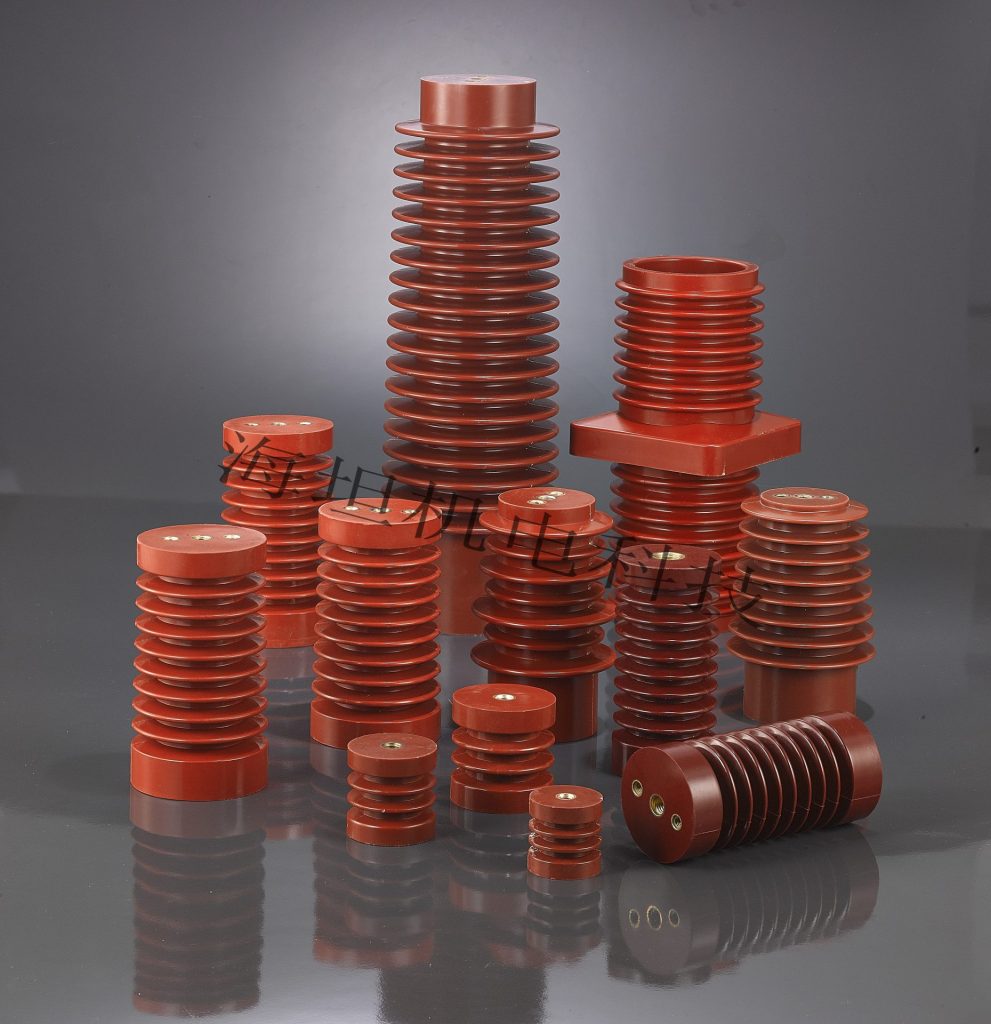Through Wall Connector Overview: Function and Application
1. Introduction
When it comes to high-current power transmission in enclosed systems like battery packs, power distribution cabinets, and industrial inverters, ensuring both electrical safety and mechanical reliability becomes a top concern. That’s where Through Wall Connectors come in.
These compact yet powerful components allow current to safely pass through metal or plastic panels without compromising insulation, sealing, or system integrity. Whether you’re an electrical engineer designing high-voltage systems or a procurement manager sourcing dependable terminals, understanding the functionality of a Through Wall Connector can make or break your project’s success.
2. What is a Through Wall Connector
2.1 Definition
A Through Wall Connector, also referred to as an Electrical through-wall terminal or Through Wall Power Terminal, is a specialized high-current electrical connector designed to pass large amounts of electrical energy through a barrier — typically a panel, wall, or enclosure — without losing insulation integrity or environmental sealing.
It bridges the power between internal and external systems while keeping both sides mechanically and electrically secure.
2.2 Work Principle
The connector typically includes:
-
A high-conductivity copper or brass conductor (often tin-plated),
-
A flame-retardant PA66 or PBT shell with strong insulation,
-
A mounting flange that ensures tight panel fit,
-
And sealing components to maintain ingress protection (often up to IP67).
Installed by inserting the terminal through a pre-cut hole, it’s fastened using screws and nuts. Electrical cables are then bolted or crimped to the inner and outer ends, ensuring low-resistance current flow and mechanical strength — all while maintaining a sealed and isolated barrier.
3. The Function of Through Wall Connector
3.1 Safe High Current Transmission
The primary role of a Through Wall Connector is to ensure safe and efficient transmission of high currents, often ranging from 100A to 400A or more. The conductor’s wide cross-sectional area (up to 120mm²) minimizes resistance, reduces overheating risk, and supports high-load equipment like industrial inverters, power distribution units, and EV battery modules.
3.2 Electrical Isolation and Short Circuit Prevention
With red and black color-coded shells to distinguish polarity, and high-grade insulating bodies made of UL94 V-0 flame-retardant material, electrical isolation is guaranteed. This structure helps prevent short circuits, arc faults, and accidental contact — ensuring protection in mission-critical environments.
3.3 Environmental Protection and Sealing
Modern through wall electrical connectors are designed to meet IP54–IP67 standards. The integrated silicone gaskets or rubber seals guard against water, dust, oil, and even corrosive gas intrusion. This is vital in outdoor setups, marine systems, or industrial workshops with aggressive environmental conditions.
3.4 Ease of Installation and Maintenance
Thanks to the flanged mounting design, these terminals can be securely locked in place with just four screws, supporting various panel thicknesses (typically 1–10mm). The bolt-type connector design also allows for fast cable replacement during equipment maintenance, reducing downtime and simplifying system upgrades.
3.5 Support for Power Management and Monitoring
High-current Through Wall Power Terminals often serve as key nodes for current measurement or voltage monitoring. Engineers can easily integrate sensing hardware to track system performance, detect load imbalance, or troubleshoot faults — essential for modern power management systems.
4. Application of Through Wall Connector
Through Wall Connectors are widely adopted in modern electrical and power systems that require high current to safely pass through sealed enclosures, cabinets, or panel walls. Their ability to maintain electrical isolation, mechanical stability, and environmental sealing makes them essential across a broad range of industries.
Energy Storage Systems (ESS)
In lithium or lead-acid battery storage systems, through wall electrical connectors serve as the bridge between battery cells and external power management units or inverters. They ensure high-current transmission without compromising the airtight and dustproof design of battery enclosures. This is especially critical for indoor ESS cabinets or outdoor containerized solutions, where IP-rated sealing and high thermal tolerance are required.
Electric Vehicles and EV Charging Infrastructure
In electric vehicle battery packs and charging stations, Electrical through-wall terminals provide a robust and safe way to connect internal high-voltage busbars with external wiring. Given the space constraints and safety regulations in EV applications, these terminals allow compact, heat-resistant, and flame-retardant solutions that comply with automotive-grade standards.
Industrial Power Cabinets and Control Panels
Whether it’s a transformer station or a custom switchgear unit, industrial control enclosures often house sensitive electronics that must remain isolated from external exposure. Through Wall Power Terminals provide a reliable path for high current to enter or exit these enclosures while maintaining system protection, supporting streamlined internal wiring, and improving panel accessibility for maintenance.
Uninterruptible Power Supply (UPS) Systems
In mission-critical applications like data centers and hospitals, UPS systems must deliver seamless high-current transfer between battery banks and inverters. Through wall electrical connectors offer a compact, reliable interface to connect these systems across steel or aluminum enclosures while maintaining system uptime and simplifying cable replacement.
Telecommunications and 5G Base Stations
Outdoor telecom equipment must operate in challenging environments that expose terminals to moisture, temperature fluctuations, and EMI (electromagnetic interference). High-current through-wall terminals with IP67 sealing and flame-retardant bodies are often used to power these systems while minimizing signal disruption and protecting internal circuitry.
Marine, Rail, and Defense Systems
Heavy-duty vehicles and transport systems such as ships, locomotives, and military-grade machinery demand ruggedized power interfaces. Through Wall Connectors help safely transfer energy between compartments or bulkheads, handling high current and resisting shock, vibration, and corrosion over extended operational periods.
5. How to Choose a Through Wall Connector
Choosing the right Through Wall Connector is critical for ensuring safe, reliable, and efficient high-current transmission in your application.
1. Rated Current and Voltage
You can start by identifying your system’s maximum operating current and voltage. Connectors typically range from 100A to 500A, with voltage ratings up to DC 1000V or 1500V. Using an underrated connector can cause excessive heat buildup and long-term reliability issues.
Reference authority:
UL 1977 Standard
This UL standard outlines the requirements for electrical connectors used in power distribution systems, helping you select compliant and safe products.
2. Conductor Material and Plating
Look for terminals made from high-conductivity copper (T2) or brass, ideally with tin or nickel plating to resist oxidation and ensure low resistance. Inferior metals increase the risk of thermal degradation and voltage loss under continuous load.
3. Shell Material and Flame Rating
To maintain insulation and fire safety, the connector housing should be made of PA66, PBT, or equivalent engineering plastics with UL94 V-0 flame retardant rating. These materials resist heat deformation, mechanical strain, and arc tracking — especially in enclosed or high-temperature environments.
Reference authority:
UL 94 Flammability Standards
UL Prospector is a widely used database for materials and compliance, essential when selecting safe, certified enclosures or connector materials.
4. Panel Compatibility and Mounting Style
Check the required panel cutout size, typically Ø20mm to Ø30mm, and the thickness range supported by the connector flange. Most through wall terminals support 1–10mm panel thickness, but this varies by model.
Mounting type should be easy to install with four-point flange holes for a firm grip, and must include sealing gaskets or O-rings to prevent ingress of dust or water.
5. Ingress Protection Rating
In outdoor or harsh environments, an IP67 or higher rating is strongly recommended. This ensures the connector can withstand exposure to dust, water jets, and even submersion for short periods, protecting your equipment and maintaining electrical integrity.
6. Thermal Operating Range
If your system operates in extreme conditions, choose connectors rated for -40°C to +125°C. This ensures stable performance under full load and protects against material fatigue, warping, or cracking over time.
7. Certifications and Compliance
For projects that must meet industry standards or regulatory requirements, verify that the connector has certifications such as:
-
UL
-
CE
-
RoHS
-
IEC 60947-7-1 (Terminal Blocks standard)
Choosing certified components reduces liability and confirms the product meets electrical, mechanical, and environmental safety standards.
8. Supplier Reputation and Technical Support
Don’t overlook the value of a reputable manufacturer. Look for suppliers who provide:
-
3D models or technical datasheets
-
In-stock availability and fast delivery
-
Engineering consultation or customisation support
Reliable suppliers not only provide quality assurance, but also post-sales technical support that’s critical during installation or troubleshooting.
6. Conclusion
Through Wall Connectors are far more than simple pass-throughs — they are the critical interface between internal control and external power in high-current applications. Their role in ensuring safe, efficient, and sealed electrical transmission can’t be overstated.
Whether you’re powering an EV battery pack, stabilizing a solar storage system, or integrating a UPS into a mission-critical control room, selecting a properly rated and certified Through Wall Power Terminal can significantly improve system longevity and safety.
With innovations in materials, sealing technology, and thermal performance, today’s Electrical through-wall terminals are built not just to meet expectations — but to exceed them in every high-demand environment.
--- END ---
© Copyright 2024 China Haitan Electromechanical Technology Co., Ltd. All rights reserved.SUPPORT BY:JUNJ Privacy Policy





